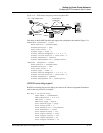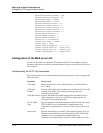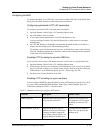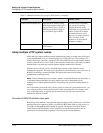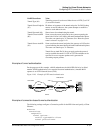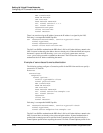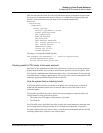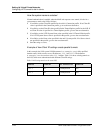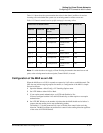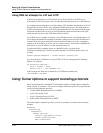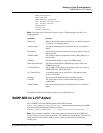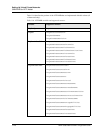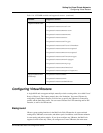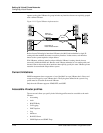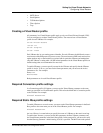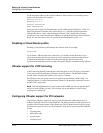
Setting Up Virtual Private Networks
Configuring L2TP tunnels for dial-in clients
MAX 6000/3000 Network Configuration Guide 11-43
Table 11-5 shows how the system matches the values in the clients’ profiles as it receives
incoming calls and whether the system uses an existing tunnel or creates a new one:
Note: If a caller that does not supply a Client ID string that matches the tunnel-server end
point, so the existing tunnel to that end point (Tunnel-ID 102) is reused.
Configuration of the MAX as an LNS
When the MAX acts as a LNS, it responds to requests by LAC units to establish tunnels. The
LNS does not initiate outgoing requests for tunnels, so configuration of the MAX is simple.
Proceed as follows:
1 Open the Ethernet > Mod Config > L2 Tunneling Options menu.
2 Set L2TP Mode to either LNS or Both.
3 If you require tunnel authentication, set L2TP Auth Enabled to Yes.
You must configure both the LAC and LNS identically, to either require or not require
authentication.
4 Set L2TP RX Window to the number of packets that the MAX should receive before it
requests that the sending device stop transmitting packets.
The default is 7. Set the parameter to 0 (zero) to disable flow control in the receiving
direction. The MAX continues to perform flow control for the sending direction regardless
of the value of L2TP RX Window.
Table 11-5.Tunnels created based on profile settings for incoming callers
Values used to match tunnel: Resulting action Tunnel-ID
Address Client ID Pri. Tunnel
Server
1.1.1.1 a1 a.example.com Reuse tunnel 102
1.1.1.1 a2 a.example.com Reuse tunnel 103
1.1.1.1 b b.example.net Establish new
tunnel
104
1.1.1.1 b a.example.com Establish new
tunnel
105
1.1.1.1 a.example.com Reuse tunnel 102
1.1.1.1 a2 b.example.net Establish new
tunnel
106
1.1.1.2 a1 a.example.com Establish new
tunnel
107



